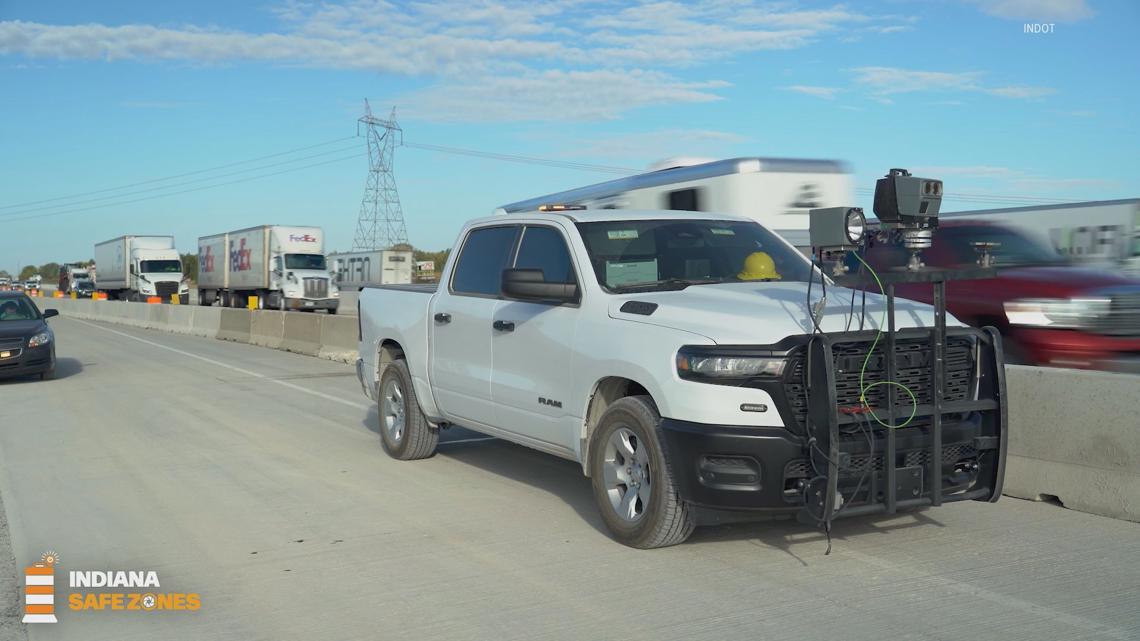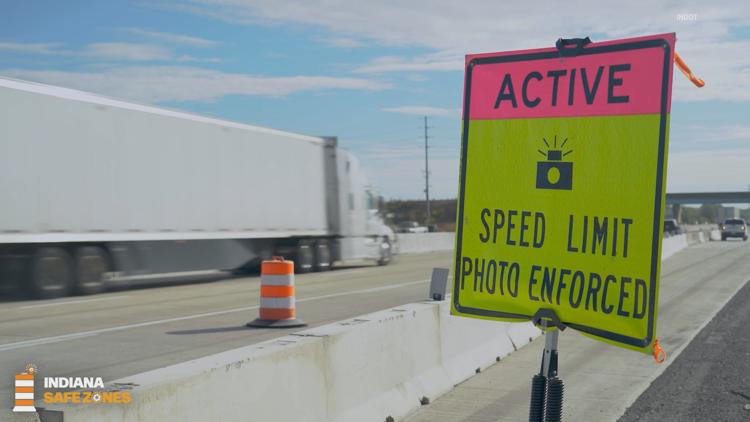INDIANAPOLIS — The first Indiana Safe Zones report from the Indiana Department of Transportation provides initial evidence that drivers slow down by work sites when they know a speed tracking camera is nearby.
“Three main goals of the program: That's to save lives, to reduce the incidents of crashes and to slow people down through the work zone," said Natalie Garret, INDOT’s strategic communications director. “Kind of an overarching goal is making sure everyone goes home safe at the end of the day — motorists, their passengers and those that are working out there on the road.”
Three months in, it appears the cameras may be working.
According to the INDOT report, speeds dropped by up to 4 miles per hour when warning signs went up in mid-August. When the mobile enforcement units were added, the state reported speeds decreased by up to 6 miles per hour.
On average, INDOT reports the number of people going 11 miles per hour or faster over the speed limit dropped by 70% eastbound and 76% westbound. In 2023, lawmakers gave INDOT the thumbs up to launch the pilot program. The new law also required the department to submit an annual report, with the first report only including initial findings from the first several weeks of the program, which started on Aug. 14, 2024.


The state program puts cameras on mobile units called worksite speed control systems. Those units are then temporarily deployed to active work sites for up to eight hours. Right now, the cameras are being deployed on a stretch of I-70 in Hancock County. However, Garett says there are conversations about utilizing the program elsewhere. State law only allows INDOT to own and operate up to four systems at a time.
The cameras only send violations to vehicles going at least 11 miles per hour over the speed limit. The report states the cameras identified nearly 18,000 enforceable events, and 8,435 courtesy notices went out to drivers as of Oct. 29.


The program is still in its pre-enforcement period, meaning notices will not come with a fine until INDOT feels comfortable with issuing live penalties.
When live penalties do go into effect, a first violation will essentially be a warning that will not incur a fine. A second violation will set drivers back $75. Every violation after will come with a $150 penalty.
Because the penalties will be issued based on a license plate number, there will be a way for vehicle owners to contest a violation. The state’s website provides owners with a few ways to contest, including providing proof they were not driving at the time a violation was issued.
The state’s website says Indiana’s program is like permanent programs in Illinois, Maryland and Pennsylvania. A handful of other states also have pilot programs in work zones.
The pilot program is expected to run through 2028.



